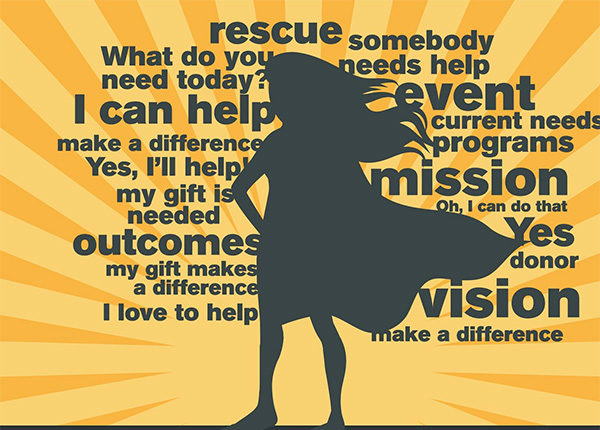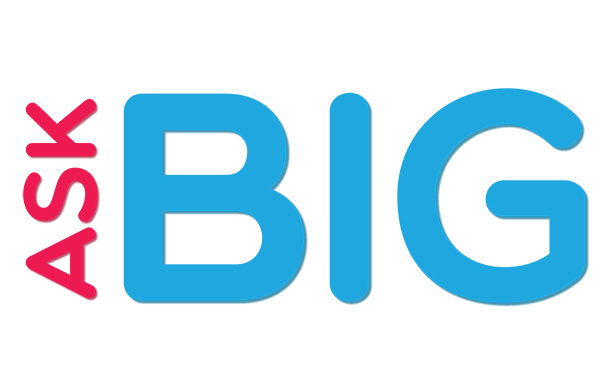Let me share an idea that’s been helpful for a number of fundraisers recently:
All of your donor communications should have a donor-shaped hole in them.
Why? So your donor can see a role for herself in what your organization is doing. So she can see a place where she can step in and do something meaningful.
If you get really good at doing this, really good at creating fundraising that makes donors say, “I see that, I can do that,” you’re going to raise a LOT of money.
The idea of a “donor-shaped hole” is an attempt to explain why a set of fundraising tactics is so effective at engaging donors. I’ll list some of the tactics below. You’ll see how each one creates a donor-shaped hole in appeals, e-appeals, events, and newsletters.
Talk To Her about What She Can Do
As you write your fundraising, write it as if you’re talking to one donor. And talk to her about what she and her gift will accomplish.
That approach is significantly different than talking about your organization, your programs, and the people you’ve already helped.
That’s a lot different than asking your donor to “become a supporter” or “please partner with us.”
Instead, write directly to her. Not to everyone, just to her. Use the word “you” a lot. Tell her that great people like her are needed. Give her an example of what her gift will do.
When you’re done, you’ll have a letter (or email, or event) that feels like a 1-to-1 communication to her and about what she can do. That’s a letter that a donor is far more likely to read and respond to than a letter (or an organization) that just keeps talking about itself!
Highlight a Small, Specific Thing Her Gift Does
What you want to do here is pick one powerful thing (or part of a thing) that your organization does. The trick is that it needs to be easy to understand, and inexpensive enough that everyone can afford one of them.
Say you’re an Education organization. You have lots of different programs, most of them long-term. You should look for part of one of those programs. For instance, if you provide math tutoring to middle school students, you can figure out the average cost to provide one day’s worth of tutoring for one student.
Most likely the cost to do that is low enough so that every donor could afford it. Congratulations, you’ve created a donor-shaped hole!
A $50 donor can provide one incredible day of tutoring for a child. A $1,500 donor can provide one incredible month of tutoring for a child.
Pro Level: Ask for the Amount She’s Most Likely to Give
Sophisticated organizations create a donor-shaped hole by asking for an amount that is the right size for the donor.
They do it using customized gift ask amounts based on each donor’s previous gift. Here’s what they do, in a nutshell:
- When they export the mailing list, they also export the amount of each donor’s previous donation. This is often called “Most Recent Gift” or MRG.
- That amount is used to calculate three gift ask amounts for each donor. Those amounts are usually 1 x MRG, 1.5 x MRG, and 2 x MRG.
- When printing the reply card for each donor, the donor’s name, address, and customized gift amounts are merge printed onto the reply card.
This is a proven way to increase response and giving. Why does it work? Because it asks your donor to give about the same amount they gave last time. This makes a donor feel like you know them. It creates a donor-shaped hole that is exactly their size.
Thank, and Report
Organizations that Thank well (promptly, emotionally, donor-centrically) make donors feel great. Great Thank You’s show the donor that she is needed and that she is appreciated.
Great organizations tell each donor, “Thank you, a great person just like you was needed, and you did exactly what was needed!” That tells the donor that there was an important role for her to play in your cause or organization, and she played it.
Take off your “Fundraiser” hat for a moment and put on your donor hat. As a donor, wouldn’t you like to hear that there was an important role for you to play, and that you played it perfectly?
After Thanking, great organizations Report back to donors on what her gift made possible.
Richard Perry is the founder of Veritus Group and one of the best fundraising strategists in North America. (He’s also my old boss!) He says, “The greatest cause of donor attrition is that the donor did not know she made a difference.”
If a donor doesn’t know that she and her gift made a difference, why would she give another gift to your organization?
Again, take off your Fundraiser hat and put on your donor hat. If your donation was needed, wouldn’t the organization Report back and let you know? If you and your gift are important, wouldn’t the organization Report back to you and show you how?
If you mattered to the organization, wouldn’t they Report back to you?
If you mattered, they would. So if your donors matter to you, Report back to them and show them how they made a difference. For each donor, show her the ‘hole’ she helped fill!
Your Next Steps
Use these tactics to create donor-shaped holes in all of your fundraising communications. If you do, your donors will start engaging with your organization more because they’ll see that they are needed, that they have a powerful role to play, and that they matter!
And if you’d like fun, experienced coaches to help your organization do this, get in touch! We can review your fundraising and help you make it stronger, or we can even create your appeals, newsletters and e-appeals for you. For less than the cost of an employee, we can improve your fundraising materials, raise you more money, and free up internal resources!



